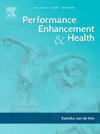Associations between types of anabolic androgenic steroids and growth hormone and adverse effects: Insights from a male cohort study
IF 3.7
Q2 HOSPITALITY, LEISURE, SPORT & TOURISM
引用次数: 0
Abstract
Background
Use of anabolic androgenic steroids (AAS) is associated with a wide range of adverse health effects. Preclinical studies suggest that different AAS compounds, as well as factors including dose and administration routes, may have distinct risks for certain adverse effects. This exploratory study aims to evaluate associations between adverse effects and use of structurally different AAS compounds and human growth hormone (hGH), as well as patterns of AAS use including dose and duration of use.
Methods
A total of 91 males reporting long-term AAS use completed comprehensive questionnaires detailing their AAS regimen and self-reported adverse effects, comprising psychological, cardiovascular, cognitive, and physical effects. Objective cardiovascular conditions were assessed using echocardiography and blood pressure measurements. Regression models were used to determine the associations between adverse effects and recent use of popular AAS compounds.
Results
Recent use of stanozolol was linked to several adverse effects, including psychological, cognitive, and self-reported and objective cardiovascular effects. Recent use of trenbolone was also associated with reported psychological adverse effects. Physical adverse effects and dependence were correlated with higher dosages, earlier initiation age, older age and the use of multiple compounds. Notably, hGH use was associated with fewer AAS dependence symptoms.
Conclusion
Though exploratory, our findings highlight the need for caution when using AAS, especially stanozolol and trenbolone, given their potential links to more adverse effects than other popular AAS. Additionally, factors including dose, duration of use, and age of initiation should be considered potential risk factors for undesired effects of AAS.
合成代谢雄激素类固醇和生长激素类型与不良反应之间的关系:来自男性队列研究的见解
合成代谢雄激素类固醇(AAS)的使用与广泛的不良健康影响有关。临床前研究表明,不同的AAS化合物,以及包括剂量和给药途径在内的因素,可能对某些不良反应有不同的风险。本探索性研究旨在评估不同结构的AAS化合物和人类生长激素(hGH)的不良反应与使用之间的关系,以及AAS的使用模式,包括剂量和使用时间。方法91名长期使用AAS的男性完成了一份综合问卷,详细说明了他们的AAS方案和自我报告的不良反应,包括心理、心血管、认知和身体影响。目的通过超声心动图和血压测量来评估心血管疾病。回归模型用于确定不良反应与最近使用的流行原子吸收剂化合物之间的关系。结果近期使用斯坦诺唑尔与几种不良反应有关,包括心理、认知、自我报告和客观心血管影响。最近使用trenbolone也与报告的心理不良反应有关。身体不良反应和依赖性与剂量较高、起始年龄较早、年龄较大和使用多种化合物相关。值得注意的是,hGH的使用与较少的AAS依赖症状相关。结论虽然是探索性的,但我们的研究结果强调了在使用原子吸收剂时需要谨慎,尤其是斯坦诺唑尔和trenbolone,因为它们比其他流行的原子吸收剂有更多的潜在副作用。此外,包括剂量、使用时间和开始使用年龄在内的因素应被视为AAS不良影响的潜在危险因素。
本文章由计算机程序翻译,如有差异,请以英文原文为准。
求助全文
约1分钟内获得全文
求助全文
来源期刊

Performance enhancement and health
Social Sciences-Health (social science)
CiteScore
4.70
自引率
0.00%
发文量
27
审稿时长
57 days
 求助内容:
求助内容: 应助结果提醒方式:
应助结果提醒方式:


